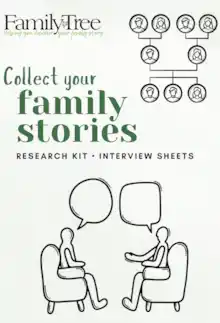04 January 2021
|
Discover how to make great progress with your online family tree with Chris Paton's four fantastic ideas for collaborative family history.
No matter how long we research our family tree, the documents we find in our family history pursuits will never provide the full story, and what we may already know can always be added to, enhanced and at times even transformed with the assistance of others. In short, it is good to share.
Read on for four great ideas for sharing your family tree online, many of which use free genealogy websites you might not yet have discovered...
1. Connect with distant cousins
There are many methods by which we can try to facilitate contact with distant cousins around the world, and to make our already identified research work harder for us. Sharing a family tree online can allow others to see our conclusions, and also act as a further data back up, should something catastrophic happen in the home environment leading to the loss of all the research gathered to date.
On various genealogy platforms, not only can we have our family trees hosted for free, we can also use them to attempt to locate further records concerning our families (although through the commercial sites these may only be available through a subscription).
With our trees made available for the public to search and view, distant cousins can also identify a relationship, and through such platforms then contact us through direct messaging facilities to share stories and send photographs.
2. Join a family history forum
Using our research to establish connections with distant cousins can open many doors, and there are many other ways to do so beyond the use of family trees. We can share our ancestors’ details on sites such as Lost Cousins and work out connections to relatives from census results, or towns and villages where common ancestors once resided.
One of the simplest, and often the most effective, means to seek an answer to a research question, or to help others with theirs, is to participate in an online discussion forum. The free to access RootsChat platform and TalkingScot are two well known sites in Britain and Ireland, with dedicated sections covering a variety of topics.
3. Harness the power of crowdsourcing
On other fronts, many research projects have also adapted to use such platforms to gather evidence, for example the University of Manchester’s ‘Conflict, Memory and Migration: Northern Irish migrants and the Troubles in Britain’ project. This seeks to document the impact on members of the Northern Irish diaspora in Britain during the Troubles, including those who were born to Northern Irish parents in Britain during the period, with the impact on identity and other issues that follow.
4. Blog your family history
The online world allows us a wonderful range of opportunities to present our findings once we are in a position to write them up and share. We can produce our own accounts on a blogging platform such as Google’s Blogger and Wordpress, or create our own dedicated family history websites on easy to use platforms such as Wix.
Article adapted from an in-depth feature on sharing your family history online in the February issue of Family Tree magazine.
About the author
Chris Paton runs the Scotland’s Greatest Story research service and teaches online courses through Pharos.
See Pen and Sword for his range of available books.
Chris’s Scottish GENES blog.








